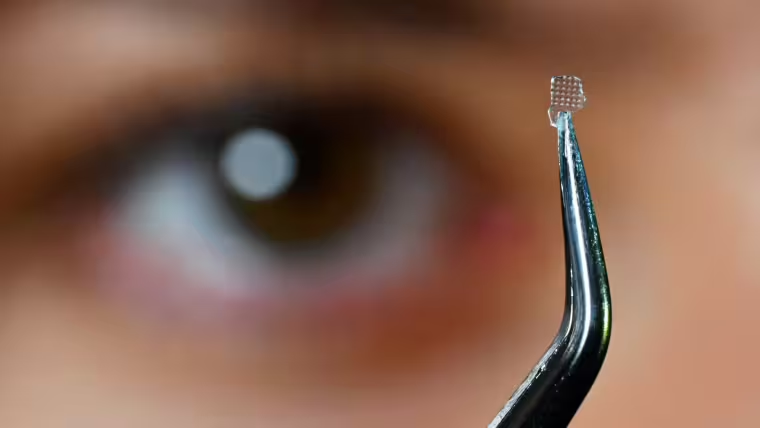An international group of scientists from the University of Jena has developed a miniature optical lens, just a few millimeters in size, that changes its refractive properties in response to the presence of gas. These micro-lenses exhibit "intelligent" behavior due to their use of hybrid glass material. The researchers published their findings in the journal Nature Communications.
 PhD Student Oksana Smirnova is investigating optical microlenses made from hybrid glasses. Image Credit: Jens Meyer, University of Jena
PhD Student Oksana Smirnova is investigating optical microlenses made from hybrid glasses. Image Credit: Jens Meyer, University of Jena
The material's optical characteristics are influenced by the molecular structure of the lens, which is a three-dimensional lattice containing cavities that may hold gas molecules.
Multi-Responsive Glasses
With support from the Carl Zeiss Foundation, we are developing so-called multi-responsive materials. In the case of the hybrid glass lens, this means that it refracts light more or less strongly depending on whether gas is absorbed in the lens material.
Lothar Wondraczek, Professor, Glass Chemistry, University of Jena
The task at hand involved adapting traditional glass-forming techniques to these unique materials.
The metal-organic frameworks we used here, are being researched and developed as materials for gas storage or separation.
Lothar Wondraczek, Professor, Glass Chemistry, University of Jena
Doctoral candidate and Lead Author of the publication Oksana Smirnova, added: “However, most of these substances decompose when heated and are therefore very difficult to form.”
The Jena researchers worked with Dr. Alexander Knebel, the Junior Research Group Leader at the Chair of Glass Chemistry, to establish an appropriate synthesis procedure for extremely pure materials. The next task was to determine the ideal circumstances for shaping the material.
We melt the material and then transfer it into a 3D-printed mold, where it is pressed. This process allows us to choose almost any desired shape. We deliberately chose the lens as the shape, even the smallest impurities are noticeable in a lens as they directly affect the optical properties.
Dr. Alexander Knebel, Junior Research Group Leader, Chair of Glass Chemistry, University of Jena
Versatile Formability
According to Wondraczek, this new technology now essentially permits a broad range of shapes and geometries, going beyond the particular application as micro-lenses.
Wondraczek explained, “Because these multi-responsive materials react to multiple influences simultaneously, they could be used for logical circuits, for example, the materials scientist describes possible applications for such components. This specifically means that two conditions are linked to the observable reaction. If a light beam hits the lens and gas is absorbed in the lens material simultaneously, then the light is refracted in a particular way, providing combined feedback.”
It is also possible to design gas separation membranes with optical characteristics that vary with the presence of gas molecules. By utilizing such optical components in sensor technology, measuring techniques could become more effective, space-efficient, and “intelligent.”
Journal Reference:
Smirnova, O., et al. (2024) Micro-optical elements from optical-quality ZIF-62 hybrid glasses by hot imprinting. Nature Communications. doi.org/10.1038/s41467-024-49428-1.